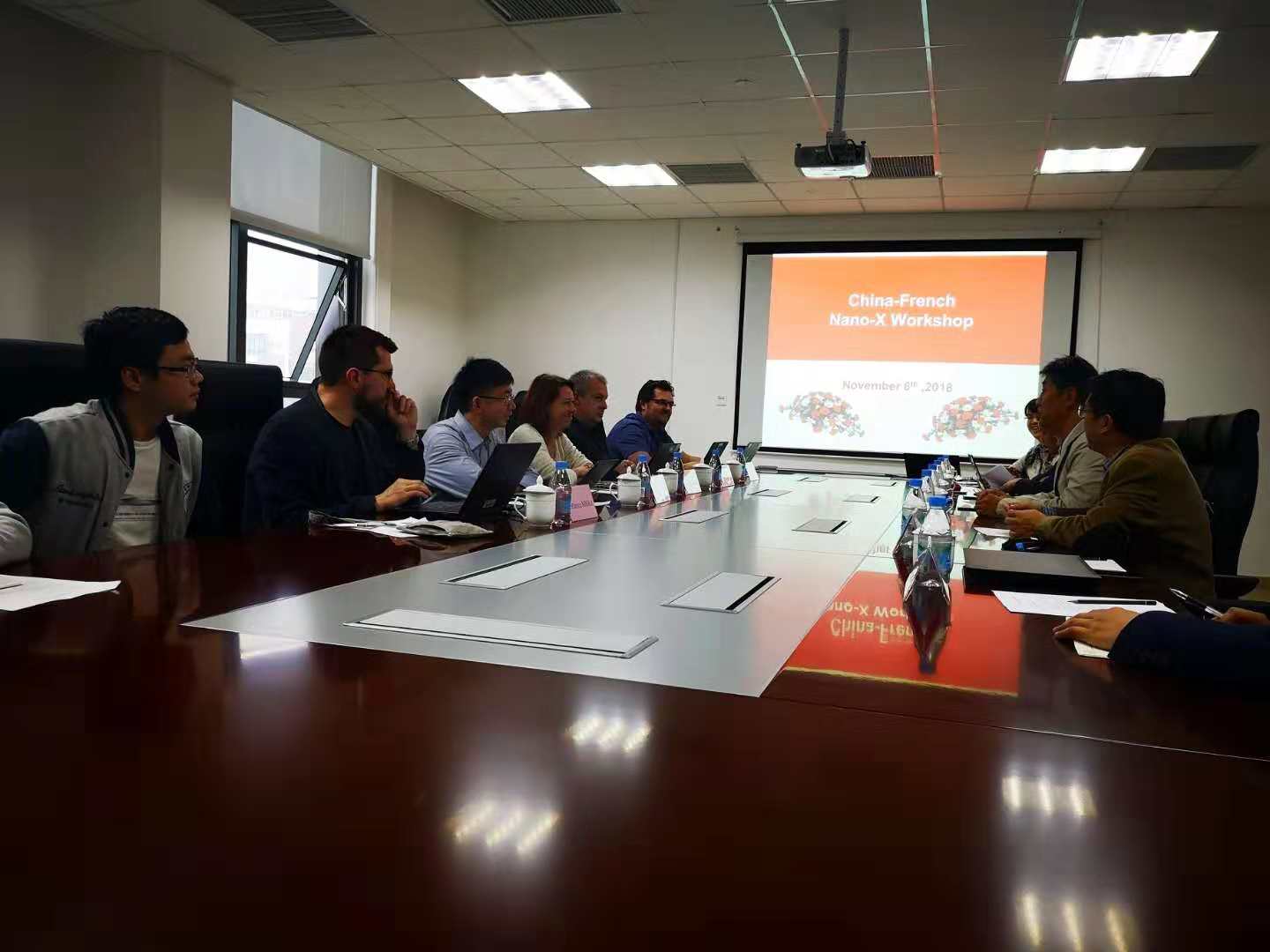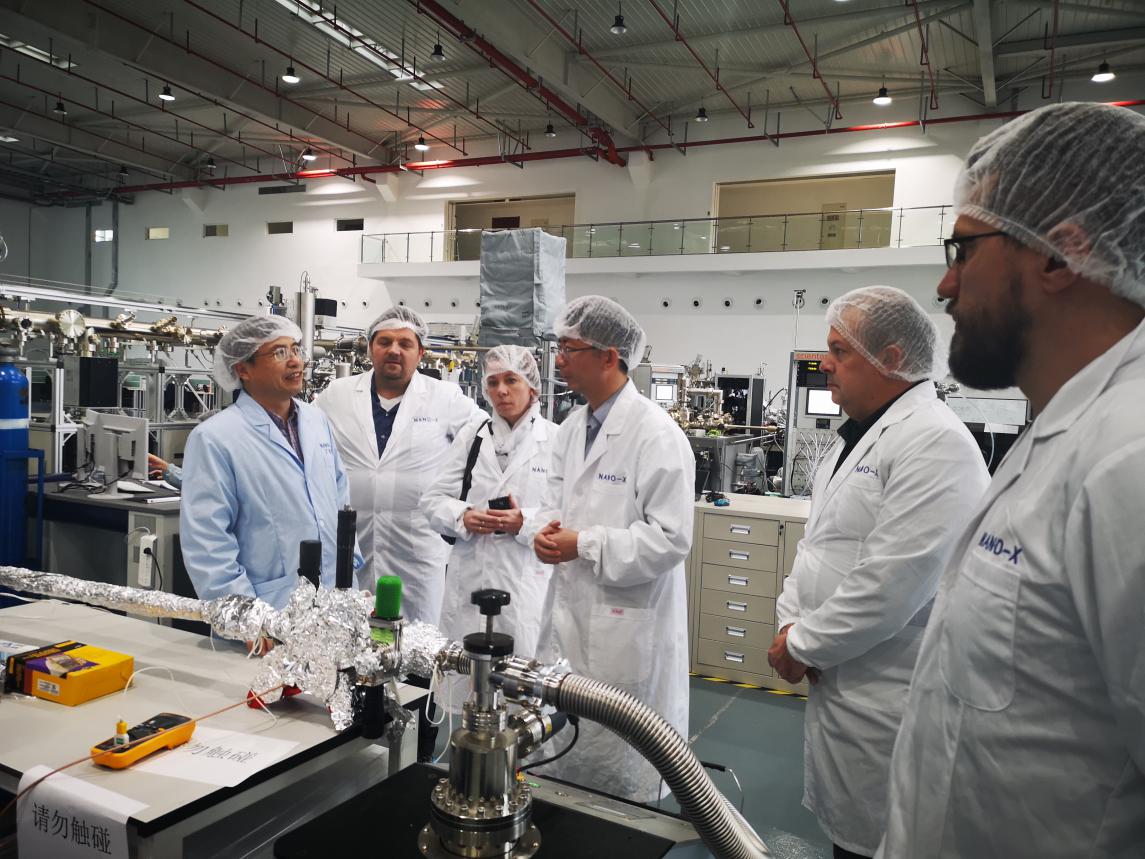On November 6, 2018, invited by Suzhou Vacuum-interconnected Nanotech Workstation (Nano-X), Chief Engineer Danielle Pierre, Prof. J.F. Pierson, Dr. Yuan Lu, Prof. Yannic, and Prof. Fagot-Revurat from Jean Lamour Institute, Nancy, France attended the seminar on "Vacuum Interconnected Technology and Researches" in SuZhou for academic exchanges and visits.
Similar as the Nono-X, there is also a vacuum-interconnected system named as “the Tube” in Jean Lamour Institute for nanomaterial growth and in-situ characterization. The platform offers a wide range of material growing techniques and multiple analytical methods that connected together in an ultra-high vacuum environment, with the goals of developing new materials, exploring their intrinsic properties and unique functions. At present, there are 23 pieces of equipment (MBE, PVD, RHEED, scanning probe, XPS, ICP, IBE, etc.) for researches already connected through 40 meters of linear UHV tubes, plus 30 meters extra tubes reserved for technology transfer service.
During the meeting, discussions focused on the technical details, functions and key indicators of the interconnected systems in both sides. Particularly, a small UHV sample transfer suitcase has been built that can be used as a “bridge” to link the two systems in China and France. To enhance the collaboration between the two Labs, several scientists of both sides reported their research progresses achieved by using the vacuum-interconnected technology. Prof. Pierson introduced an in-situ characterization method being used for exploring the intrinsic properties of transition metal nitride (TMN) films that were precisely prepared by reactive magnetron sputtering, and Prof. Yannic presented his recent result of circular polarized light emitting from a single quantum dot without applying an external magnetic field. In addition, Prof. Fagot-Revurat and Dr. Patrice Miska talked about analysis and characterization of heterojunctions and interfacial electronic structures using the UHV interconnected multi-techniques. Correspondingly, Prof. Jiagui FENG and Dr. Fangsen Li from Nano-X also introduced the current progresses in 2D materials preparation and studies on their electronic structures, as well as some new research proposals on organic superconductors. In the end, Prof. Jianping Liu demonstrated his research progress on GaN-based laser diodes (LDs) by using the the vacuum interconnected system (Nano-X), and called for close cooperation with other scientists on related issues to further improve the performance and reliability of green-light LDs.
Through the one-day face to face discussion, both teams expressed strongly intentions for further cooperation, especially in student exchanges, sharing samples and research data. The cooperation between the two large-scale UHV interconnected facilities will bring more opportunities for future technical innovations and scientific breakthroughs.

Photo(Image by SINANO)

Sino-French Seminar(Image by SINANO)

Vist Nano-X(Image by SINANO)
downloadFile
